Summary of offered kinds of malts
| colour | ||
| Kilned malt | Kilned malt | |
|---|---|---|
| Pilsen | 3.0 - 4.0 EBC | |
| Vienna | 7.0 - 10.0 EBC | |
| Munich | 15 - 25 EBC | |
| Wheat | 2.5 - 5.0 EBC | |
| Green malt caramelized by roasting | Caramel malt | |
| Light caramel | 100 – 120 EBC | |
| Caramel | 140 – 160 EBC | |
| Dark caramel | 180 – 220 EBC | |
| Extra dark caramel | 350 – 450 EBC | |
| Malt roasted in drum | Roasted malt | |
| Chocolate | 800 – 1000 EBC | |
| Coloured | 1200 – 1500 EBC | |
Pilsen malt
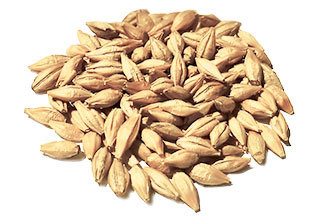
Malt type:
Pilsen malt from 2-row spring barley
Characteristic:
Standard pilsen malt produced from selected
varieties of the spring barley
Usage: (most used type of malt)
the standard base for producing Pilsner and Lager type beers. Excellent in many lighter styles such as Pilsner and Lagers. Base for authentic “Czech beer style” such as Bohemian Pilsner.
Qualitative marks:
(according to the year of the harvest)
| Colour | 3 – 4 EBC |
| Moisture content | max. 5 % |
| Extract | min. 81,5 % in dry matter |
| Protein content | max. 11.3 % |
| Kolbach index | 36 – 42 % |
| Relative extract | 34 – 39 % |
| Friability | min. 80 % |
| Saccharification | max. 15 min |
Vienna malt
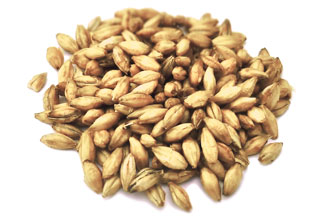
Malt type:
Vienna malt from 2-row spring barley
Characteristic:
Vienna Malt deepens the light and brilliant colour
of the beer and creates a pleasant, full-bodied
taste. Selected brewing barley is used to produce
the malt and manufactured according to a special malting process. This malt will reinforce the color and aroma of all beer styles.
Usage:
is most frequently used in the production of European style golden brown lagers and also and for all Vienna Beer Style, particularly Eastern European and German style beers, and brings out a pleasant malty taste.
Qualitative marks:
(according to the year of the harvest)
| Colour | 7 – 10 EBC |
| Moisture content | max. 4.5 % |
| Extract | min. 81,5 % in dry matter |
| Protein content | max. 11.3 % |
Munich malt
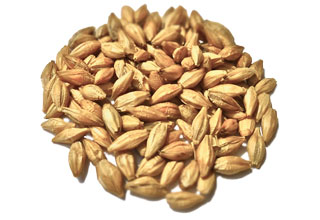
Malt type:
Munich malt
Characteristic:
Munich malt, like Vienna malt, is kilned at high
temperatures to emphasize the production
of melanoidins. Munich malt will reinforce color
it gives an amber color to the beer.
Usage:
to enhance body and aroma of dark beers, such as Pilsner and Bavarian Dark. Based on its strong flavor and the characteristic color, this malt is mainly used for producing dark beers. Golden orange hue with an intensly malty flavor.
Qualitative marks:
(according to the year of the harvest)
| Colour | 15 – 25 EBC |
| Moisture content | max. 4.5 % |
| Extract | min. 81,5 % in dry matter |
| Protein content | max. 11.3 % |
Wheat malt
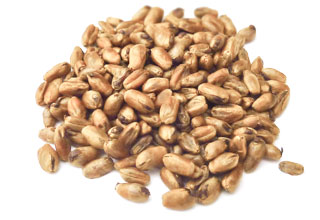
Malt type:
Wheat malt produced from high quality wheat
Characteristic:
Creamy sweet, malty, charakteristic wheat flour
flavor, intensified wheat malt aroma and taste.
Usage:
Base for production of wheat beers, added during the production of both barley lager and top fermented beers.
Qualitative marks:
(according to the year of the harvest)
| Colour | 2.5 – 5 EBC |
| Moisture content | max. 6 % |
| Extract | min. 83 % in dry matter |
| Protein content | max. 10 – 13 % |
Caramel malt light
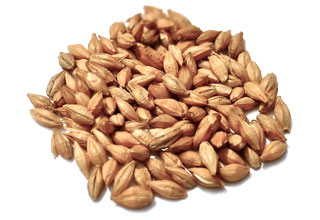
Malt type:
caramel type malt 100 – 120 EBC
Characteristic:
Caramel Malt light reinforces the typical
“caramely” malt aroma of the beer. It gives
the beer a darker colour and increases froth
stability. In addition it strengthens the full-bodied character of the beer. The malt is malted, sugared and finally gently roasted using a special process.
Usage:
is best used from light to medium colored lagers. Primarily to improve mouth-feel and head retention.
Qualitative marks:
(according to the year of the harvest)
| Colour | 100 – 120 EBC |
| Moisture content | max. 6 % |
| Extract | min. 75 % in dry matter |
Caramel malt dark
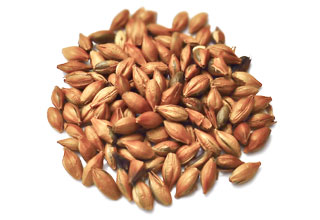
Malt type:
caramel type malt 180 – 220 EBC
Characteristic:
Caramel Malt dark also (crystal malt) reinforces
the typical “caramely” malt aroma of the beer.
It gives the beer a significantly darker colour
and increases foam stability. The colour of the malt can be determined in line with the wishes of the customer in a range of ±10%.
Usage:
Perfectly suited for Pilsner, light beer, lager, reduced-alcohol beer, special beer as well as for other dark beers.
Qualitative marks:
(according to the year of the harvest)
| Colour | 180 – 220 EBC |
| Moisture content | max. 5 % |
| Extract | min. 74 % in dry matter |
Caramel extra dark
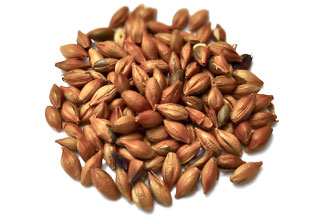
Malt type:
caramel type malt 350 – 450 EBC
Characteristic:
This extremely Caramel malt dark also (crystal
malt), reinforces the typical “caramely” malt
aroma of the beer. It gives the beer smooth taste
and sweet flavour, significantly darker colour and increases foam stability. In addition, it enhances the full-bodied character of the beer. The colour of the malt can be adjusted to customer requirements within a range of ± 10%.
Usage:
is great for use in dark beers type such as Amber Ale, Stout, Porter etc..
Qualitative marks:
(according to the year of the harvest)
| Colour | 350 – 450 EBC |
| Moisture content | max.4.5 % |
| Extract | min. 74 % in dry matter |
Chocolate malt
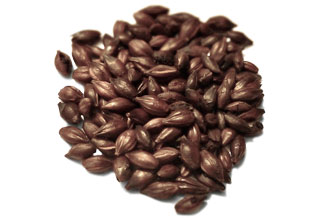
Malt type:
coloured malt 800 – 1000 EBC
Characteristic:
Chockolate Malt (roasted malt) gives the beer
greater depth of colour and adds fine nuances
of chocolate or coffee aromas. For all beer styles
for coloration. Chocolate Malt shares many of the characteristics of Black Malt but because it is roasted for a slightly shorter period of time and end temperatures are not so high, colour is 200° EBC lighter.
Usage:
for production of dark and half-dark Munich beers, and also in baking and confectionery industry
Qualitative marks:
(according to the year of the harvest)
| Colour | 800 – 1000 EBC |
| Moisture content | max.4.5 % |
Coloured malt
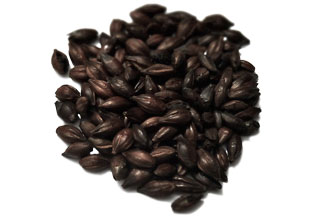
Malt type:
coloured malt 1200 – 1500 EBC
Characteristic:
Coloured malt (roasted malt) gives the beer
greater depth of colour and adds fine nuances
of chocolate or coffee aromas. The malt flavour is
also emphasised. It’s imparts an astringent, smoky flavour and as well as Porter it is used in many dark beers and stouts.
Usage:
for production of dark Munich beers and in baking industry as well. Black Malt with a standard colour of 1300° EBC is obviously of primary use for its colouring value. It is historically the key ingredient in Porter and enjoying a revival in many breweries, as a distinctive and flavoursome speciality beer.
Qualitative marks:
(according to the year of the harvest)
| Colour | 1200 – 1500 EBC |
| Moisture content | max.4.5 % |
 Downlaod Qulity Certificate
Downlaod Qulity Certificate